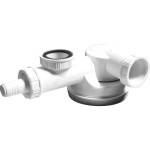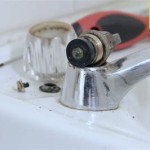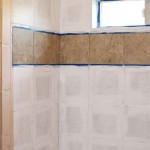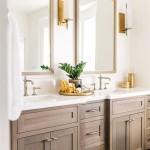How To Set a Budget for a Bathroom Remodel
A bathroom remodel can dramatically enhance the value and enjoyment of your home. However, it can also be a costly undertaking. Proper budgeting is essential to ensure a successful project that aligns with your financial goals. By following a strategic approach, homeowners can create a realistic budget that accounts for all necessary expenses while staying within their financial limits.
1. Determine Your Scope and Goals
The first step in budgeting for a bathroom remodel is to clearly define the scope and goals of the project. This involves deciding on the specific aspects of the bathroom you want to renovate, the desired aesthetic, and any functionality improvements you envision. Consider the following factors:
- Existing Structure: Is the bathroom layout functional, or do you plan on making significant structural changes like adding a shower or moving walls?
- Fixtures: Will you replace the toilet, sink, bathtub, or shower? Are you considering upgrades like a walk-in shower or a double vanity?
- Finishes: Do you prefer tile floors, wood floors, or a different material? What kind of countertops, backsplash, and paint are you envisioning?
- Functionality: Are you seeking accessibility features, increased storage, or other specific functionality improvements?
Once you have a clear understanding of your remodeling goals, you can begin to estimate the costs associated with each element.
2. Research and Gather Cost Estimates
With your remodeling scope defined, it's time to gather cost estimates for materials, labor, and permits. Researching prices from various sources is crucial for obtaining accurate estimates and comparing options:
- Local Building Supply Stores: Visit stores in your area to get quotes on materials like tile, countertops, fixtures, and cabinets.
- Online Retailers: Research online retailers like Home Depot, Lowe's, and Amazon to compare prices and explore diverse product options.
- Contractors and Designers: Contact local contractors and interior designers to obtain estimates for labor and design services.
- Online Cost Estimators: Utilize online tools and calculators that provide ballpark estimates based on your project specifications.
Request detailed breakdowns for each cost category, including materials, labor, permits, and any potential contingencies. Compare estimates from different sources to ensure you're getting competitive prices.
3. Allocate Budget Categories
Once you have a solid understanding of estimated costs, it's time to allocate your budget across different categories. A typical bathroom remodel budget might include:
- Labor: This is usually the most significant expense, accounting for 30-50% of the total budget. Factor in demolition, plumbing, electrical, and carpentry work.
- Materials: Include the cost of fixtures, tile, flooring, countertops, cabinets, paint, and other materials.
- Permits: Depending on your location and the extent of your remodel, you may need permits for plumbing, electrical, or structural work.
- Design Fees: If you're working with a designer, budget for their fees, which can vary depending on their experience and project scope.
- Contingencies: Always allocate a contingency fund of 10-20% of your total budget to cover unforeseen expenses or changes in material prices.
Allocate your budget realistically, considering the relative importance of each category and your overall financial constraints. Remember, unexpected costs can arise, so it's essential to have a contingency fund.
4. Prioritize and Consider Alternatives
After allocating your budget, prioritize your renovation goals and consider alternative options to stay within your financial limits:
- Prioritize Essential Upgrades: Focus on items that provide the most value and functionality, such as a new toilet or shower. You can postpone non-essential upgrades like fancy countertops or fixtures until later.
- Explore Cost-Effective Materials: Consider affordable alternatives for materials like tile, flooring, and countertops. There are budget-friendly options available without sacrificing quality or style.
- DIY When Possible: If you have experience with home improvement, consider tackling some tasks yourself, like painting or installing fixtures, to save on labor costs.
- Negotiate with Contractors: Don't be afraid to negotiate with contractors to obtain better pricing and potentially save money on labor costs.
By prioritizing your goals and exploring cost-effective options, you can create a budget that fits your financial situation while still achieving a successful bathroom remodel.

7 Inexpensive Bathroom Remodel Ideas Budget Dumpster

Bathroom Remodel On A Budget Simple Made Pretty 2024
A Guide To Budgeting For Your Bathroom Remodeling Hdr

Our Small Full Bathroom Remodel On A Budget Jane At Home

Bathroom Renovation Cost How Much To Budget For A Remodel

A Guide To Budgeting For Your Bathroom Remodeling Hdr

Our Small Full Bathroom Remodel On A Budget Jane At Home

Bathroom Remodeling A Step By Guide Budget Dumpster

Bathroom Remodel Ideas On A Budget Forbes Home

Budget Remodeling For Small Bathrooms
Related Posts







